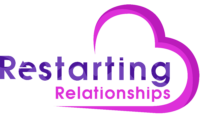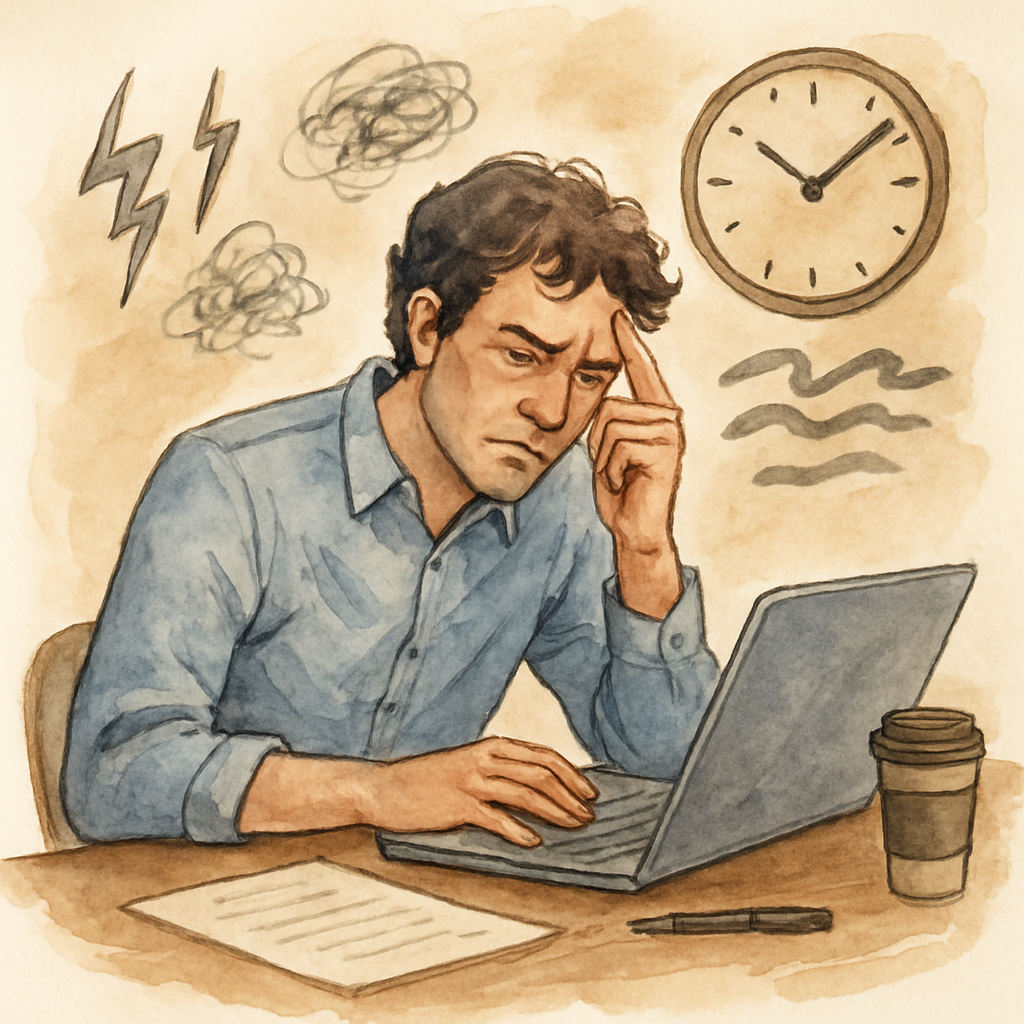You’re exhausted but can’t rest. You sit down to work and can’t focus. Every little task feels like a mountain. You forget appointments, avoid emails, and wonder if something deeper is going on. You’ve started asking questions like:
- Is this ADHD?
- Or am I just burnt out?
- Or… both?
It’s a common and confusing overlap. Burnout and ADHD can look strikingly similar—yet the path to healing them is very different. Misunderstanding the root of your symptoms can delay the support you need.
Let’s break it down.
🔍 What ADHD and Burnout Share in Common
Whether you’re neurodivergent or just chronically overwhelmed, you might experience:
- Trouble starting or finishing tasks
- Emotional reactivity or irritability
- Trouble focusing or remembering
- Low motivation or drive
- Sleep problems or inconsistent energy
- Constant mental fatigue
- Avoidance of work, relationships, or self-care
- A sense of guilt, shame, or “I should be doing better”
Both ADHD and burnout disrupt executive functioning—the part of the brain that helps you plan, regulate, and act. Both can leave you feeling like you’re failing at life, even when you’re trying incredibly hard.
But they come from different places.
🧠 ADHD Is a Neurodevelopmental Condition
Adult ADHD is not a stress response—it’s a neurological difference present from childhood (even if unnoticed until adulthood). It affects how you regulate:
- Attention
- Impulses
- Emotions
- Energy
Many adults with ADHD adapt through perfectionism, masking, or overachievement—until their coping strategies collapse under adult responsibilities. That’s often when they wonder, “Why is this suddenly so hard?”
In therapy, ADHD patterns tend to show up as:
- Chronic inconsistency across contexts (school, work, home)
- Lifelong struggles with focus or impulsivity
- High creativity or intuition with low follow-through
- Emotional “storms” that pass quickly but feel intense
- Shame, rejection sensitivity, or people-pleasing
- Difficulty with transitions, time, or task initiation
It’s not caused by stress—but stress makes it worse.
🔥 Burnout Is a Stress-Induced Collapse
Burnout, on the other hand, is a state of emotional and nervous system depletion that results from prolonged stress, overwork, or unmet emotional needs. It can happen to anyone—even people with great coping skills and no history of ADHD.
Burnout shows up as:
- Apathy and withdrawal after periods of high performance
- Emotional numbness, dread, or detachment
- Cynicism or loss of purpose
- Reduced effectiveness at work or in daily life
- Brain fog, fatigue, and sleep disruption
- Resentment toward responsibilities or people who “need” you
It’s especially common in carers, high performers, teachers, therapists, parents—and often goes unnoticed until it hits hard.
⚠️ Can You Have Both? (Yes—and Many People Do)
Here’s where things get tricky: ADHD makes you more vulnerable to burnout.
Why?
- ADHD often leads to compensatory overwork and masking
- Tasks take more energy to complete
- Small failures are internalized more harshly
- Emotional regulation requires more effort
- Rest rarely feels earned or enough
So many adults with undiagnosed ADHD burn out trying to seem “normal.” Therapy becomes the first place they’re allowed to unravel.
🧭 How to Tell Which One You’re Experiencing
While only a therapist or psychologist can offer a formal assessment, here are some clues:
| Symptom | ADHD | Burnout |
| Present since childhood? | Yes, often missed or masked | No, tends to develop over time |
| Focus problems | Lifelong or variable by interest | Recent, across most areas |
| Emotional dysregulation | Intense, fast-moving, sensitive to cues | Blunted, numb, or cynical |
| Response to time off | Still scattered or restless | Some clarity or relief (at first) |
| Identity | “I’ve always felt different” | “I used to be fine” |
| Response to structure/support | Improves significantly | Needs deep rest, boundary shifts |
Still unsure? That’s okay. Therapy can help you sort it out—no pressure to define it right away.
🛠️ How We Work With ADHD or Burnout in Therapy
No matter what’s going on, the goal is the same: understanding your nervous system, restoring regulation, and reconnecting to yourself. But the tools we use will vary depending on the root issue.
For ADHD, therapy might include:
- Emotional regulation tools
- Executive function scaffolding
- Nervous system awareness
- ADHD-focused mindfulness
- Exploring giftedness or twice exceptionality
- Reframing shame and perfectionism
- Identity integration and self-trust
For Burnout, therapy might include:
- Nervous system recovery and rest permission
- Grief for what’s been lost (energy, identity, time)
- Redefining boundaries and roles
- Trauma-informed pacing and restoration
- Somatic tools for fatigue and numbness
- Realigning with purpose and self-worth
- Exploring whether ADHD is also present
🌱 You Don’t Need to Push Harder—You Need to Be Understood
Whether this is ADHD, burnout, or something else entirely—you’re not broken. You’re tired of adapting without support. You deserve clarity, relief, and the tools to build something sustainable.
I work with clients across Queensland and Australia via secure video therapy, and offer in-person sessions by request.
👉 Ready to Explore What’s Really Going On?
If you’re stuck in self-doubt or can’t tell if it’s your brain or your burnout talking—therapy can help you find the clarity and compassion you’ve been missing.
📞 Contact us to book a session. Whether it’s ADHD, burnout, or both—there’s a path forward. And we can find it together.

